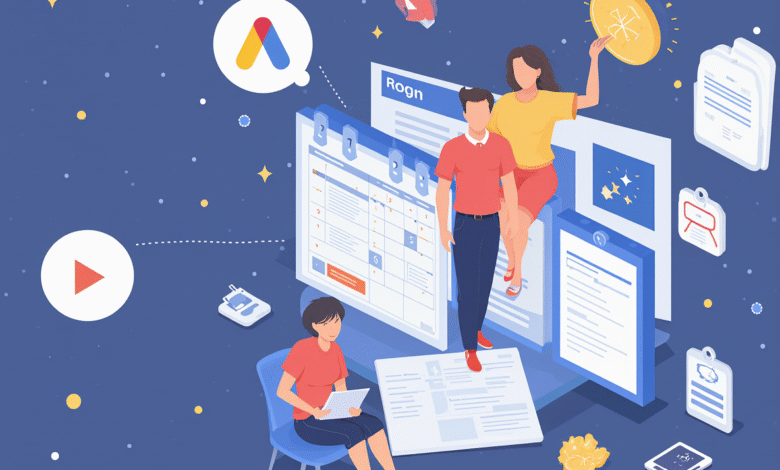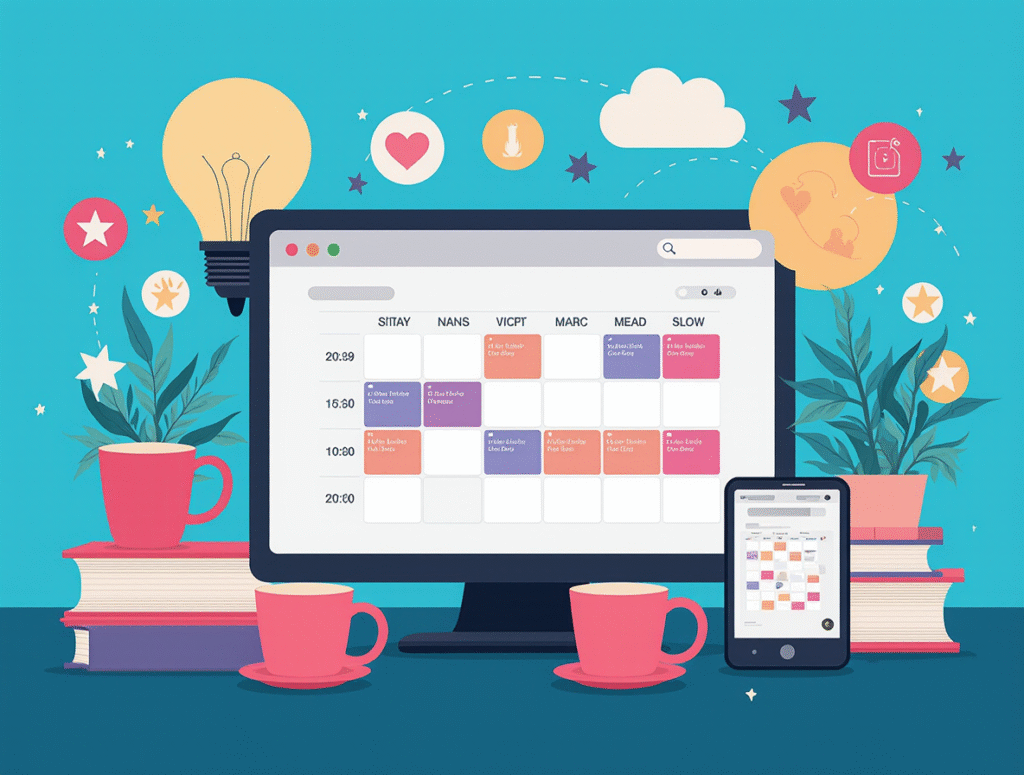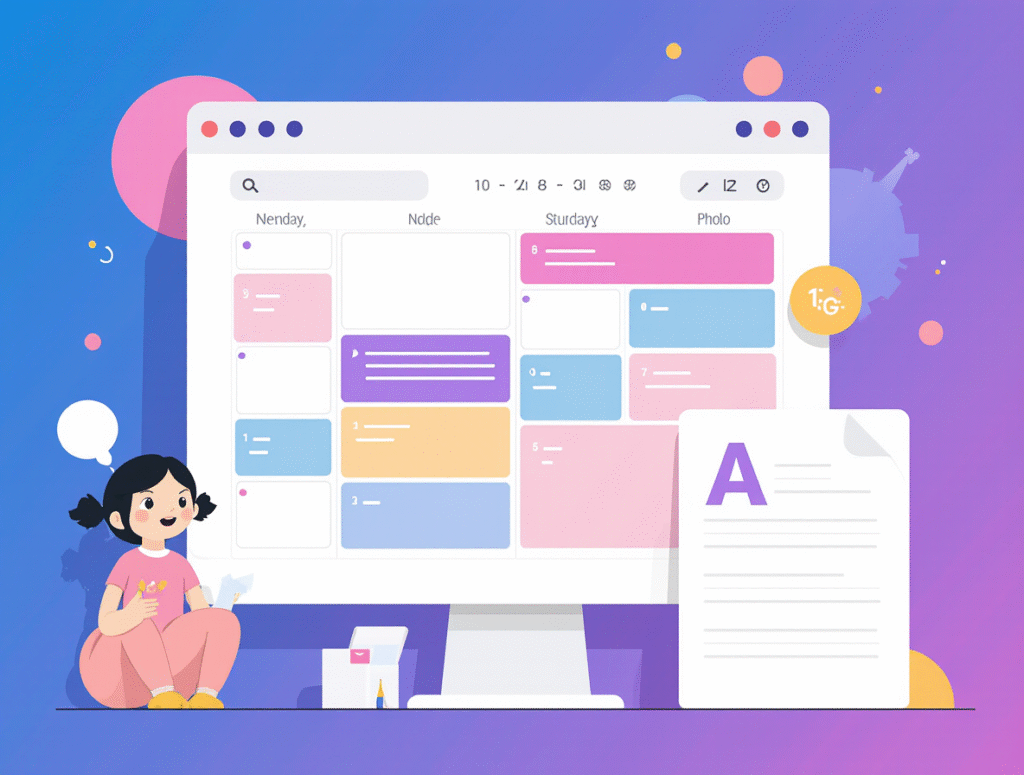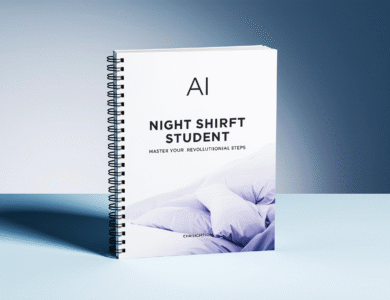Google Calendar AI Scheduling for Night Shift Students: 10 Easy Steps to Academic Success

Your eyes burn from staring at the screen. It’s 4 AM, your shift ends in three hours, and you just remembered that paper due at noon. Panic sets in as you realize you double-booked your study group meeting with work. Again. This isn’t how you imagined college life—constantly choosing between sleep, work, and grades, feeling like you’re failing at all three.
What if your Google Calendar AI Scheduling for Night Shift Students could actually understand your night shift reality? What if it stopped being another source of stress and started working like a personal assistant who gets your unconventional schedule?
Table of Contents
Why Traditional Calendars Fail Night Shift Students
Regular scheduling tools assume everyone operates on a 9-to-5 mindset. They don’t understand that your 2 PM might feel like someone else’s 2 AM. They can’t comprehend that scheduling a study session immediately after your shift is like asking someone to run a marathon after pulling an all-nighter.
The constant juggling act costs you more than just sleep. Research shows night shift students average 1.3 points lower GPA than their daytime counterparts. Not because they’re less capable, but because they’re using tools designed for a different world.
How Google Calendar AI Understands Your Unique Schedule
Google’s artificial intelligence learns your patterns. It notices that you’re more alert between 8-10 PM than 8-10 AM. It recognizes that you need recovery time after three consecutive nights. Most importantly, it stops treating all hours as equal and starts working with your actual energy rhythms.
The AI component analyzes thousands of data points: your shift patterns, class schedules, assignment deadlines, and even your response to notifications. Over time, it builds a personalized understanding of when you’re most productive, when you need rest, and how to balance your competing priorities.
The 10-Step System to Transform Your Calendar

Step 1: Enable AI Features in Your Settings
Most people use Google Calendar like a digital notebook. You’re going to activate its brain. Start by opening Settings on your desktop (mobile setup comes later).
Turn on “Working Hours” but set them to reflect your actual schedule. If you work 11 PM-7 AM, that’s what you enter. This tells the AI your non-negotiable blocks. Next, activate “Smart Suggestions” and “Events from Gmail.” These features allow the calendar to learn from your behavior and automatically add assignments from your student email.
Enable “Time Insights” to track where your hours actually go. The data might surprise you—most night shift students discover they’ve been underestimating study time by 40%.
Step 2: Color-Code Your Reality
Your calendar should be readable at a glance, even when you’re exhausted. Create this color system:
- Red: Work shifts (non-negotiable income)
- Blue: Classes (fixed academic commitments)
- Green: High-energy study sessions
- Yellow: Low-energy review work
- Purple: Self-care and sleep blocks
This visual coding helps your brain quickly assess whether a week is balanced or overloaded. Seeing too much red? You know to decline extra shifts. Not enough green? Time to protect study hours.
Step 3: Master the Goals Feature
This is where AI becomes your secret weapon. Open Google Calendar on your phone, tap the “+” button, and select “Goal.” Choose “Study” or create custom goals for specific subjects.
The magic happens when you set preferences. Tell the AI you want to study biology 5 hours weekly, preferably in the afternoon or evening. The system then finds slots that actually work with your schedule, not against it.
Unlike manual scheduling, Goals adapt when your shifts change. If you pick up an extra night, the AI automatically reschedules study sessions instead of leaving them conflicting with work.
Step 4: Create Smart Event Buffers
Your brain and body need transition time that day-shift students don’t. For each work shift, create events that include:
- 45 minutes pre-shift for commute and preparation
- 90 minutes post-shift for decompression and travel
- 3-hour sleep blocks protected from notifications
The AI learns from these buffers. When you consistently dismiss alarms during sleep blocks, it stops suggesting meetings during those hours. When you regularly need extra time after difficult shifts, it adjusts future buffers automatically.
Step 5: Set Up Intelligent Notifications
Generic reminders create alert fatigue. You need a tiered system:
Critical Alerts (shift starts, exams):
- Push notification + email + distinctive sound
- 24-hour, 3-hour, and 1-hour warnings
Important Reminders (assignments, meetings):
- Push notification only
- 48-hour and 24-hour advance notice
Flexible Tasks (study sessions, reviews):
- Gentle notification at event time
- Easy to dismiss without guilt
Configure “Focus Time” for deep work sessions. This automatically declines meeting requests and silences distractions during your most productive hours.
Step 6: Sync All Your Academic Platforms
Stop manually transferring deadlines. Most learning management systems offer calendar integration:
- Canvas: Settings → Calendar → Subscribe to Calendar Feed
- Blackboard: Tools → Calendar → Subscribe
- Google Classroom: Automatic with same account
- Microsoft Teams: Sync with Office 365 calendar
These integrations pull assignment due dates, exam schedules, and even room changes automatically. The AI then considers these fixed points when making scheduling suggestions.
Step 7: Leverage Location Intelligence
Your phone knows where you are—use that to your advantage. Enable location services for Google Calendar to:
- Adjust travel time estimates based on real traffic
- Suggest nearby study spots when you have gaps
- Remind you to leave for work based on current conditions
- Automatically mute during your shifts
When the system knows you’re at work, it can silence non-urgent notifications. When it detects you’re on campus, it can suggest which library has available seats.
Step 8: Implement the Two-Week Review
AI improves with feedback. Every Sunday, spend 15 minutes reviewing:
- Which study sessions did you complete?
- Where did you struggle with energy?
- What notifications helped versus annoyed?
- Any new patterns emerging?
The system learns from your responses. If you consistently reschedule morning study sessions, it stops suggesting them. If you always complete evening sessions, it prioritizes those time slots.
Step 9: Create Shift-Specific Templates
Night shifts aren’t created equal. Build templates for different scenarios:
Clopeners (closing then opening):
- Minimum 8-hour sleep block between
- Light review only next day
- No important decisions for 24 hours
Three in a Row:
- Protected recovery day after
- Meals and self-care scheduled
- Social commitments blocked
Split Shifts:
- Nap blocks clearly marked
- Low-cognitive tasks between
- Hydration and nutrition reminders
Save these as different calendars you can enable when needed.
Step 10: Activate Predictive Planning
After 4-6 weeks of consistent use, the AI starts anticipating your needs. It might notice you always get sick after five consecutive nights and suggest taking the sixth off. It could detect that you perform better on exams when you have two recovery days beforehand.
This predictive capability transforms your calendar from reactive to proactive. Instead of constantly putting out fires, you’re working with a system that helps prevent them.
Making It Work During Exam Crunch
When finals approach, your scheduling needs change. Create an “Exam Mode” that:
- Automatically reduces work hours if possible
- Blocks 3-hour study sessions before each exam
- Schedules recovery sleep after major tests
- Limits social commitments without your approval
- Increases buffer times between activities
The AI can help communicate these changes to employers and professors through smart scheduling of availability and appointment slots.

Troubleshooting Common Issues
Problem: AI suggests terrible times for studying.
Solution: The system needs more data. Manually schedule sessions for two weeks while providing feedback on suggestions.
Problem: Notifications during sleep.
Solution: Set “Sleep” focus hours in your phone settings that override calendar alerts.
Problem: Conflicts between multiple calendars.
Solution: Designate one as primary and set hierarchy rules for the AI to follow.
Problem: Energy crashes despite good scheduling.
Solution: Use Time Insights to identify patterns, then adjust templates accordingly.
- how to stay awake and focused during study after night shifts: 12 smart strategies that work
- best apps for night-shift student productivity: 8 how-to tips
- Healthy Lifestyle for Night-Shift Students: 7 Keys to Long-Term Success
Your Next Steps Toward Balance
You didn’t choose the night shift life, but you can choose how you manage it. These ten steps work because they acknowledge your reality instead of fighting against it.
Start tonight. Open Google Calendar during your break and complete just step one. Tomorrow, add color coding. Within a week, you’ll have a system that understands your world.
The goal isn’t perfection—it’s progress. Each small improvement compounds until you stop missing deadlines, start acing exams, and finally achieve the balance that feels impossible right now.
Your education matters. Your health matters. Your income matters. With the right system, you don’t have to choose.
Ready to transform your schedule? Pick one step to implement tonight and share your experience in the comments below. What’s your biggest scheduling challenge as a night shift student?



